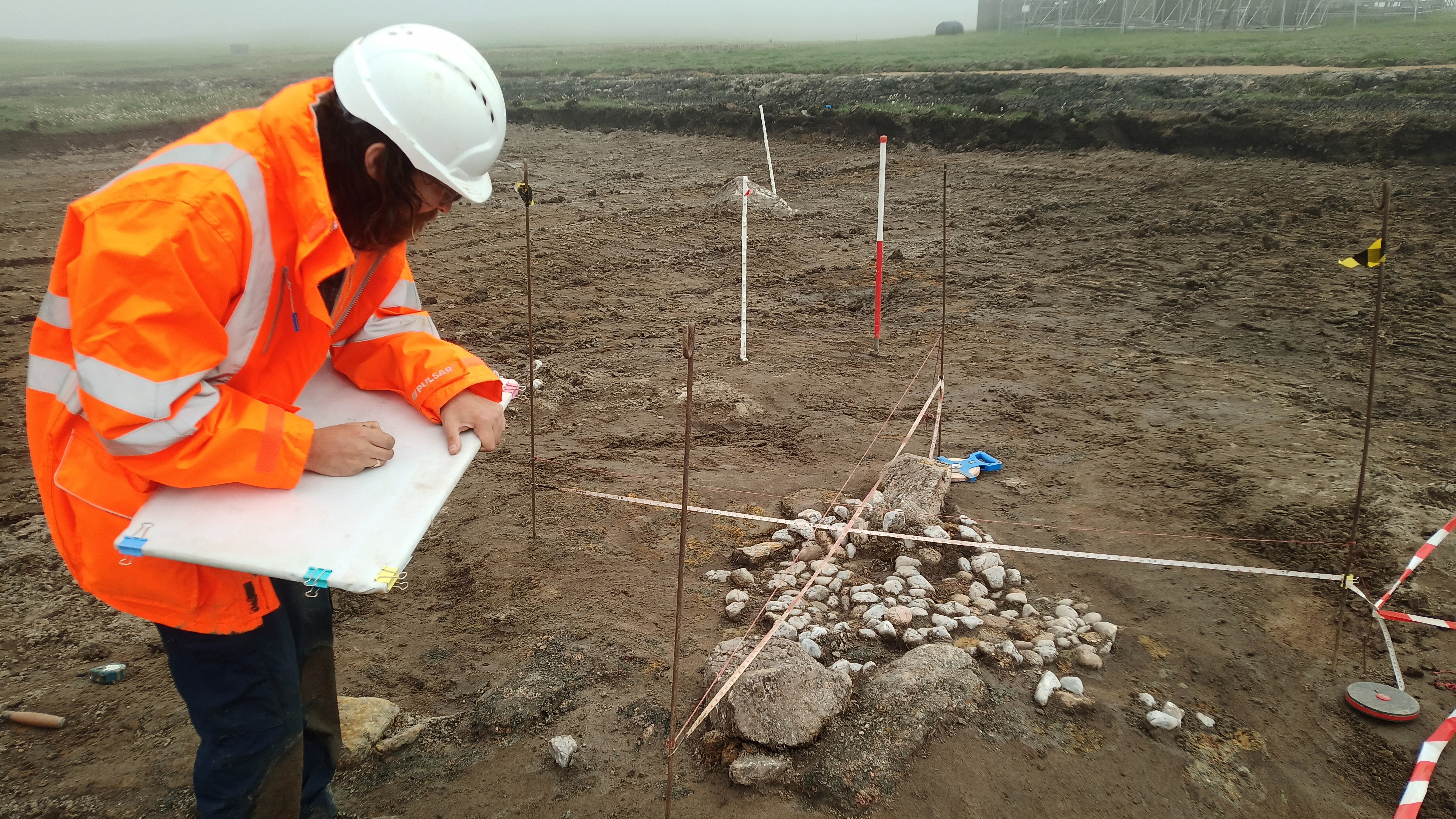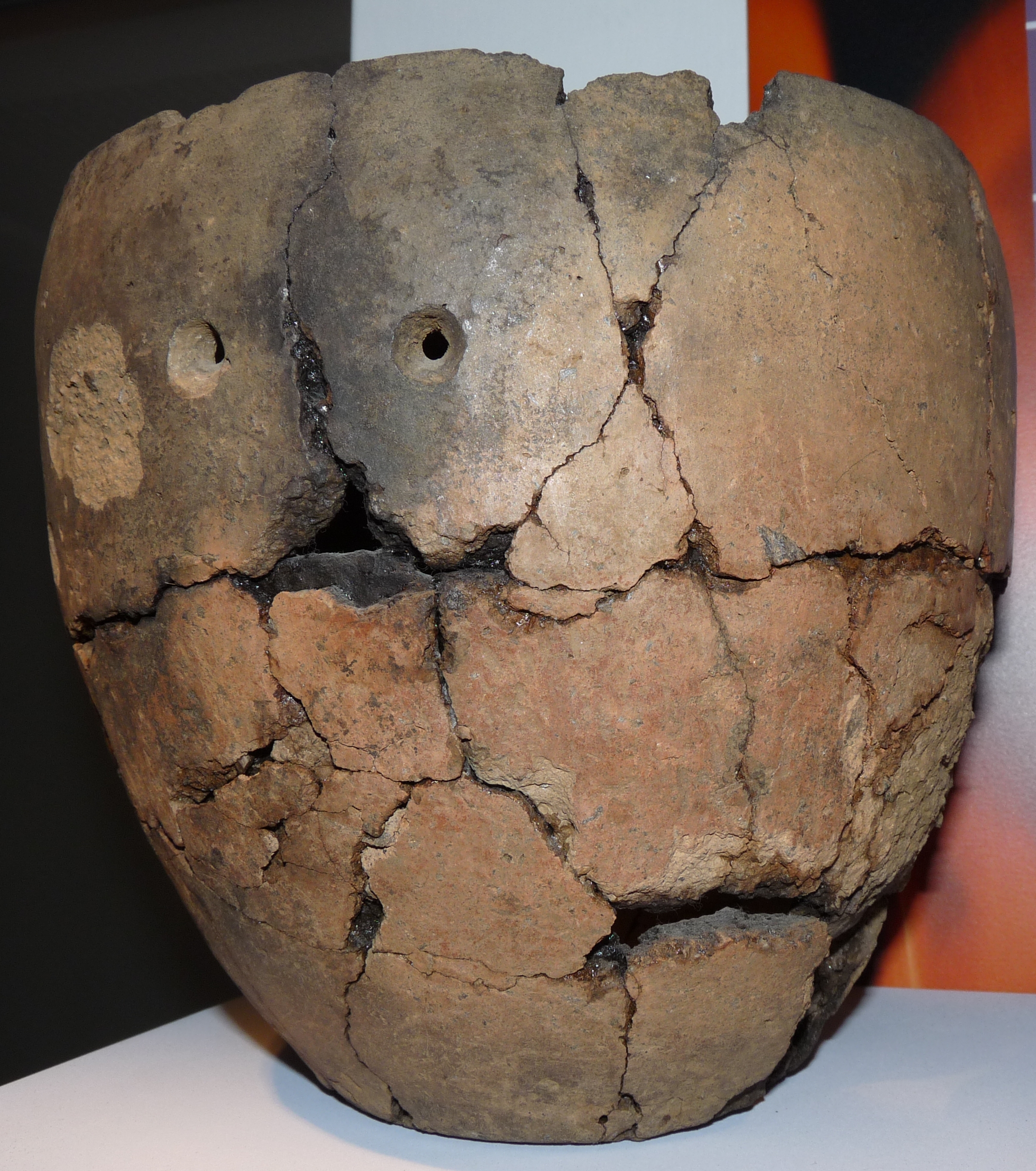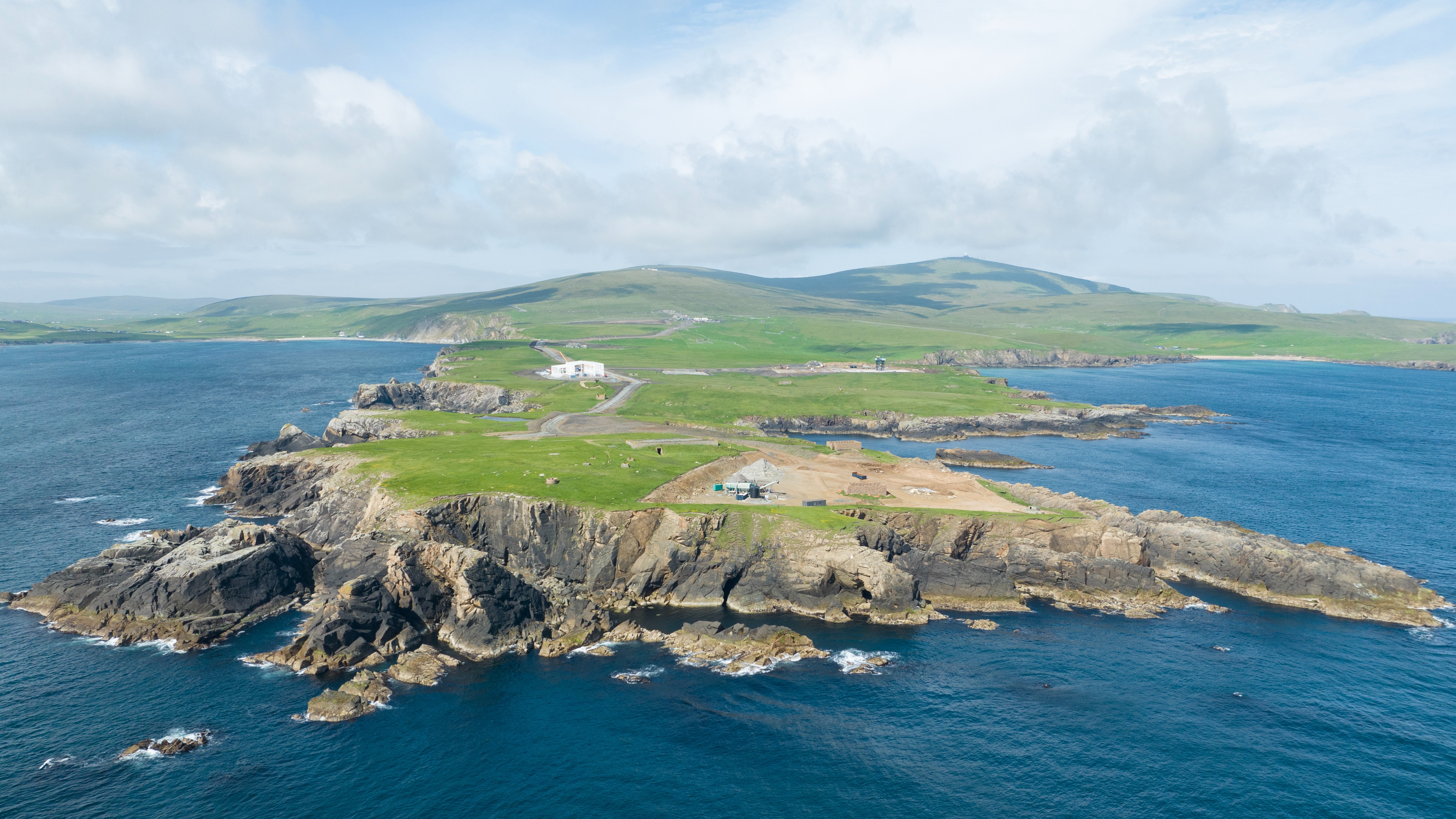UK spaceport unearths a Bronze Age surprise ahead of 1st rocket launches this year
'It's definitely very exciting.'

Space age, meet Bronze Age.
Shiny quartz, giant granite stones and a possible cremation came to light during a dig at the new SaxaVord Spaceport readying for rocket launches on the United Kingdom's northernmost island.
Shetland's SaxaVord plans to host its first space liftoff later this year, pending readiness of its license and the companies planning to send small rockets to space from Unst, in the far north of Scotland.
"It's definitely very exciting," an official with SaxaVord (who asked not to be named) told Space.com of the dig. It will take months at the least to learn about the finds and to figure out how to protect them, but spaceport officials said they are committed to sharing the story in some way for visitors — perhaps using an exhibition or marker.
Related: Spaceport construction set to begin on UK's northernmost island
Company AOC Archaeology was on site at SaxaVord to document a scheduled (protected) radar station for the Second World War; it's standard practice to do this kind of thing while building new things in the U.K., given how dense the archaeological record is below ground. While carefully digging, AOC found the Bronze Age artifacts by accident as there were no other known ones in the immediate area.
"We didn't expect to find this Bronze Age thing as well," said Val Turner, an archaeologist who represents the county at large through a Scottish charity, the Shetland Amenity Trust. (The U.K. has many such charities that record archaeology sites and monitor excavations when development takes place, to ensure cultural heritage is being protected by scientific community standards.)
Get the Space.com Newsletter
Breaking space news, the latest updates on rocket launches, skywatching events and more!
AOC did not return requests for interviews. Representative Katie O'Connell told the BBC that the site stands apart due to its circular zone of highly reflective and white quartz pebbles. (There is another circular quartz feature in the Shetland area, but it's newer and Pictish — from the Iron Age that came after the Bronze, Turner told Space.com.)
Archaeologists also found evidence of cremations (burnt bones) and filing-cabinet sized granite boulders that would have needed several people to move over a short distance.
The boulders were particularly puzzling, Turner said, as the gigantic stones were buried so that only the tips were visible. She cautioned the excavations are at such an early stage that nobody knows for sure if the timing of the cremations and boulders coincided. But if so, "it is quite possible that they (the stones) were put there in order to create a visual boundary of the area."
Related: Space archaeology is a thing. And it involves lasers and spy satellites

The Bronze Age, very loosely defined, describes an evolving set of cultural beliefs as well as mainly using bronze (instead of stone) for tools, according to the British Museum. In the general sense it is the era of barrows or cremations, and people living in roundhouses and clearing forests for their livestock — but dating and interpretation is difficult.
Nobody at the time called it the "Bronze Age" — that's a 19th-century term. Moreover, different regions of the world experienced the "age" in different ways and in different times. In what we now call the United Kingdom, the Bronze Age lasted from roughly 2,200 BCE to 800 BCE, British Museum officials stated — but even that dating has loose boundaries as local U.K. groups were highly distinct from each other.
Related: See the face of 'Ava,' a Bronze Age woman who lived in Scotland 3,800 years ago
The Bronze Age was a very long time period — approximately 1,400 years in the U.K. by the museum's reckoning. So what was generally true of a group in the earlier part of the era might be very different by the end. But archaeologists can use tools such as pottery, burial practices and scientific processes — like carbon dating, or measuring the decay of one type of carbon relative to another — to study the Bronze Age.
It's important to know all this to follow what archaeologists are trying to uncover at SaxaVord. What we now call Shetland does have Bronze Age finds, but not very many. Communities in the region were also highly distinct from one another. While each find at SaxaVord is precious, different areas of Shetland may have very different ways of living shaped by their environment, their local groups and by their neighbors.

In retrospect, Turner said, it wasn't too much of a surprise to find Bronze Age activity at SaxaVord. "The area of land is insular, and it's got sea on either side under these big skies. It's very flat in terms of most of the landscape. It looks like an ideal place for there to be prehistoric presence."
The area shows no evidence of cultivation, Turner noted, so at this time nobody appears to have lived nearby. That said, future spaceport excavations may uncover more evidence. While a great deal of the SaxaVord area has been recorded, there still are other relatively untouched spots.
Turner said the Bronze Age in Shetland generally was marked by more rainfall than in the previous era, the Neolithic. Peat, a key source of fuel, was growing more intensively. But the colder and rainier climate encouraged communities to move downhill in search of better habitation areas.
"Life is getting that bit harder, but having said that in Shetland, a lot of the houses and the way they live doesn't seem to change terribly much," Turner said. "You do see change seen in the styles of burial and the types of pottery coming in ... and then there's something called burnt mounds, which come in at the end of the Bronze Age. So you've got cultural changes happening, but slowly and over a long period of time."
Also in the broader Shetland region, evidence of Bronze Age trade is visible much further to the south. The style of clay molds there appears to be Irish, suggesting some link across the Irish Sea, Turner said. And as copper and tin were both required to make bronze, tin imports came in from the southwest of England late in the Bronze Age to join with locally mined copper.
Turner emphasized the SaxaVord exacations will help archaeologists gain insight about the Bronze Age not only there, but in Sheltand at large, particularly when it comes to understanding its people. For example: teeth analysis of the burnt bones may show where people grew up, as local water is trapped in the bone during childhood.
"There's an awful lot that we could learn because we know so little," Turner said of SaxaVord's contribution. "As the excavation goes on, it will begin to unfold a bit more of a story as to what's going on there."
Join our Space Forums to keep talking space on the latest missions, night sky and more! And if you have a news tip, correction or comment, let us know at: community@space.com.

Elizabeth Howell (she/her), Ph.D., was a staff writer in the spaceflight channel between 2022 and 2024 specializing in Canadian space news. She was contributing writer for Space.com for 10 years from 2012 to 2024. Elizabeth's reporting includes multiple exclusives with the White House, leading world coverage about a lost-and-found space tomato on the International Space Station, witnessing five human spaceflight launches on two continents, flying parabolic, working inside a spacesuit, and participating in a simulated Mars mission. Her latest book, "Why Am I Taller?" (ECW Press, 2022) is co-written with astronaut Dave Williams.









